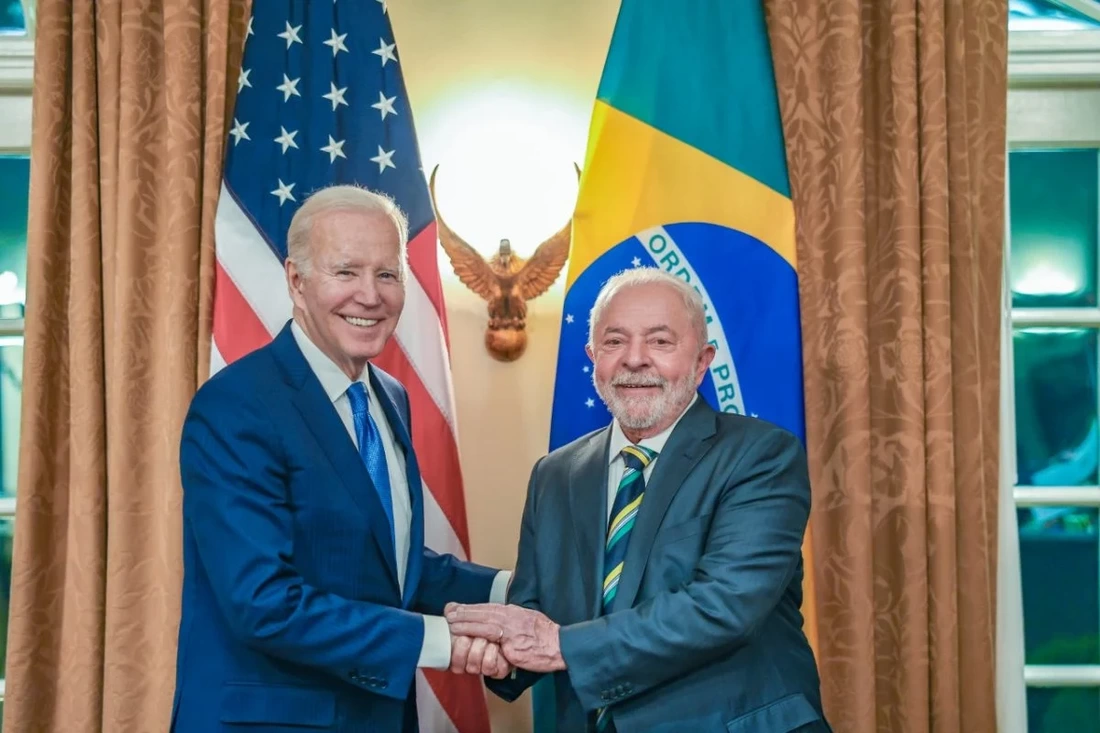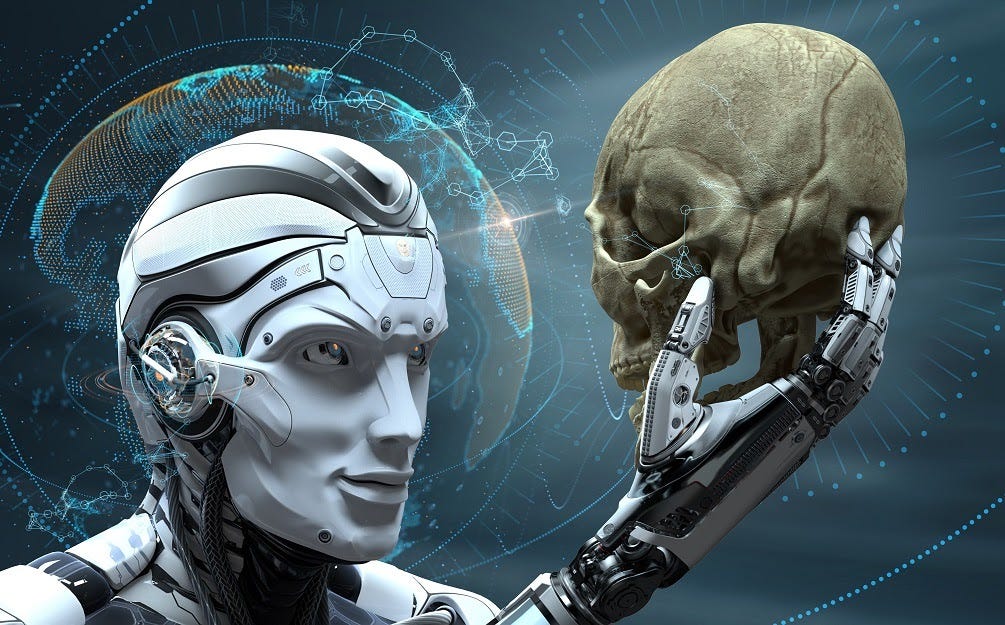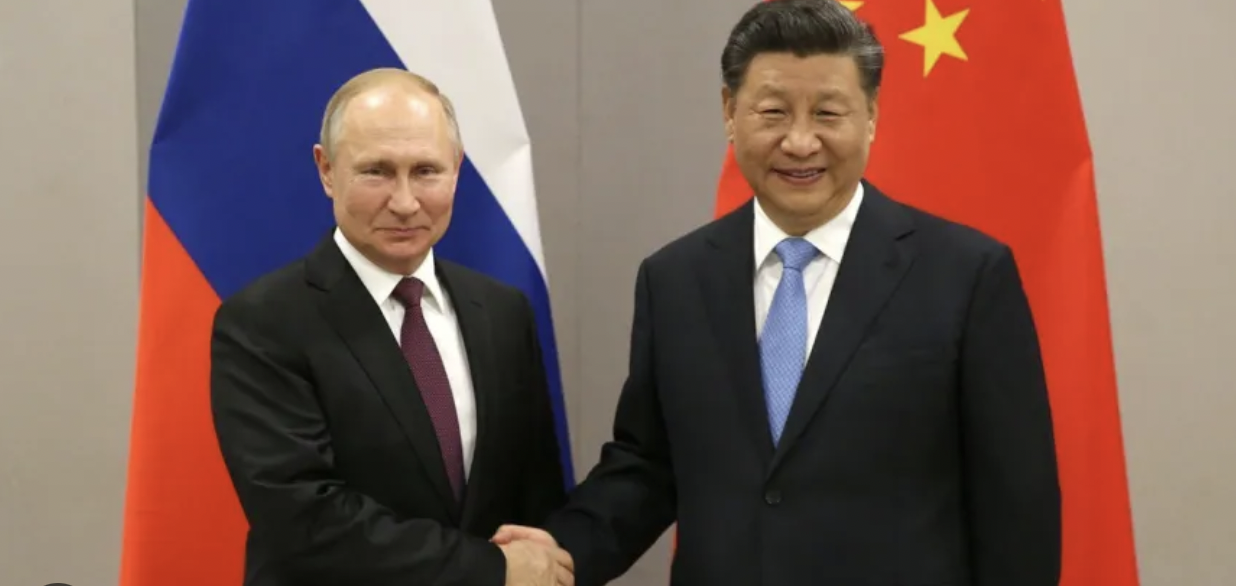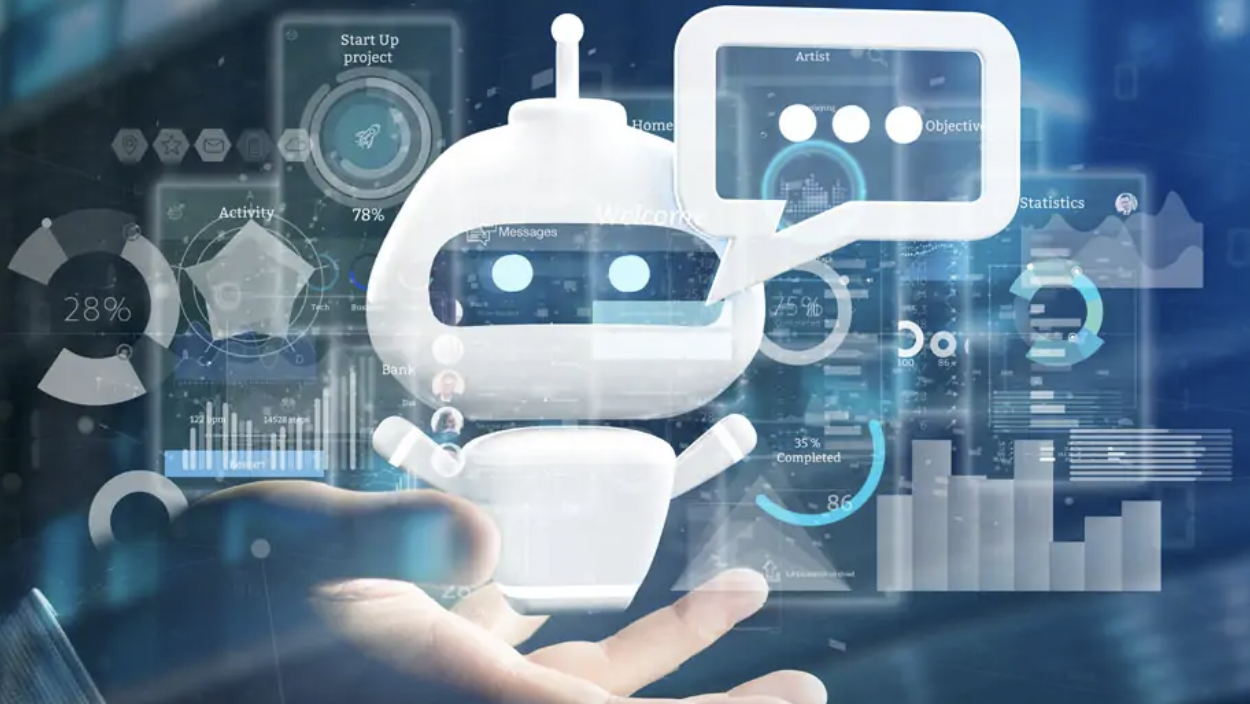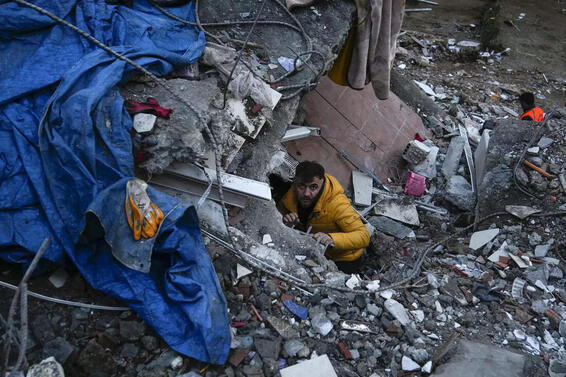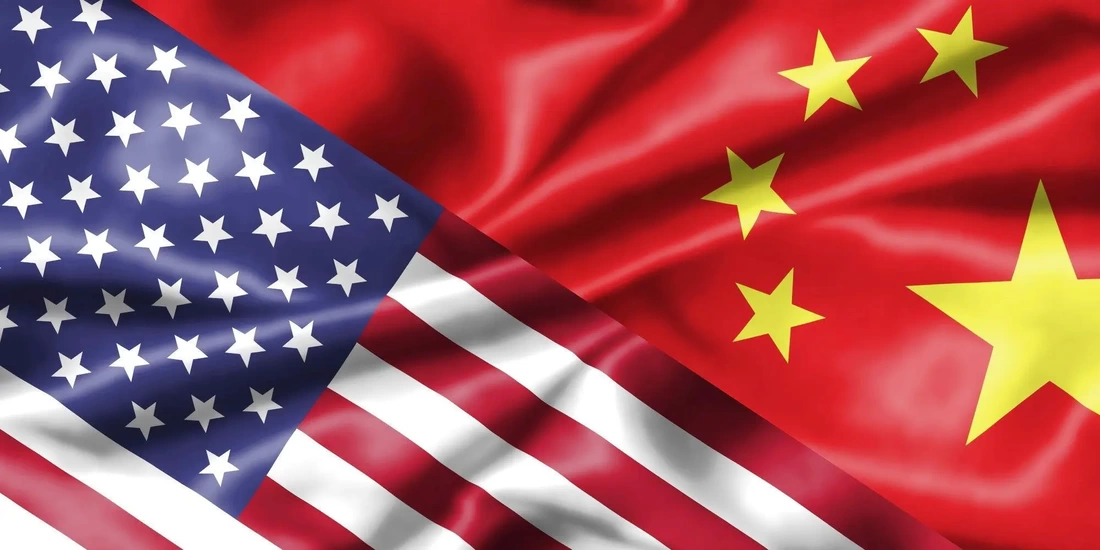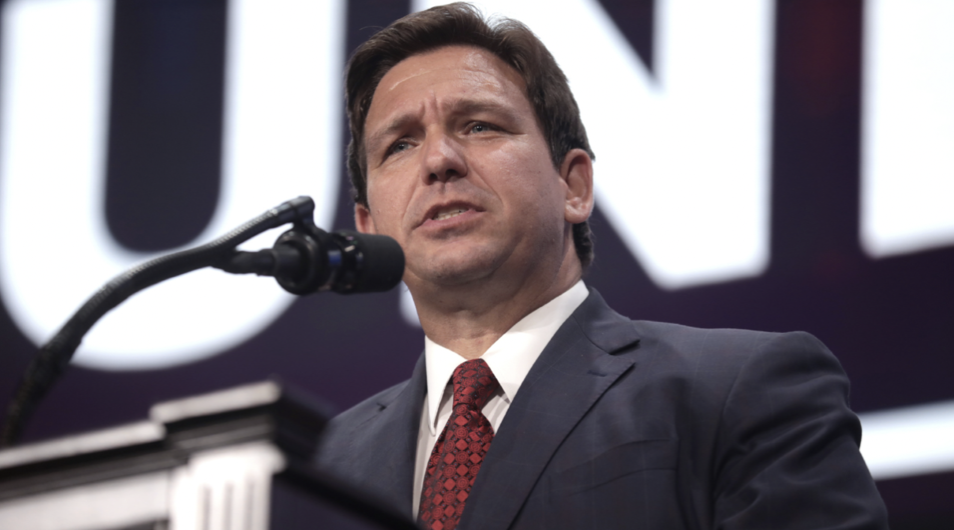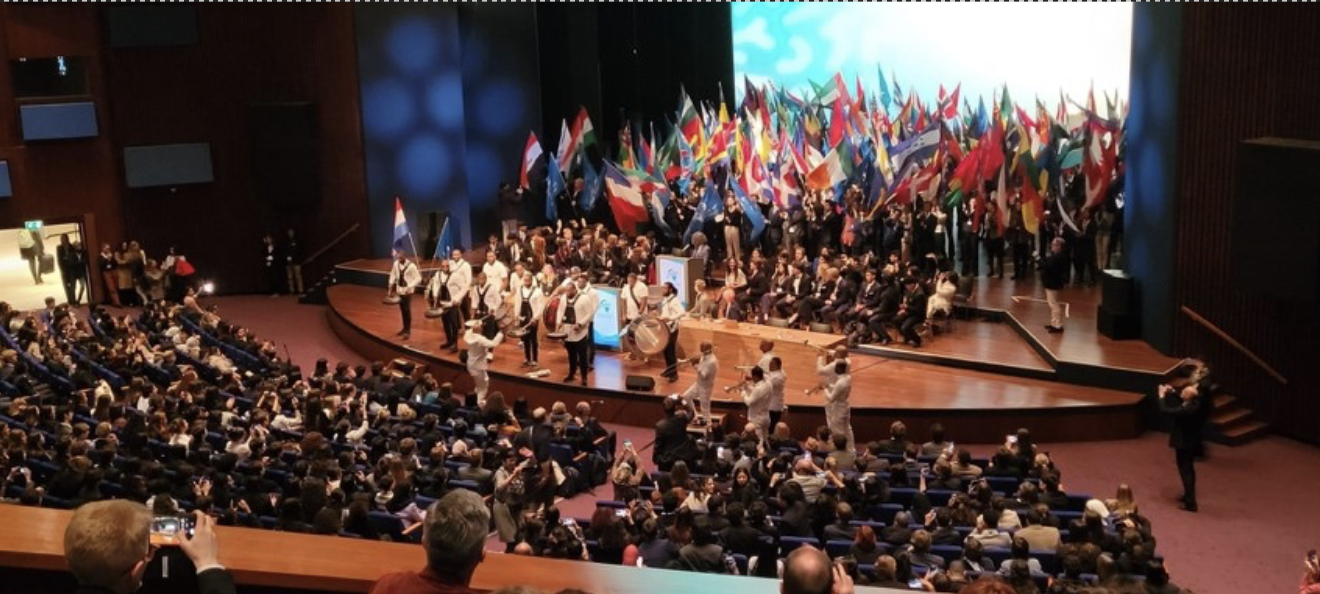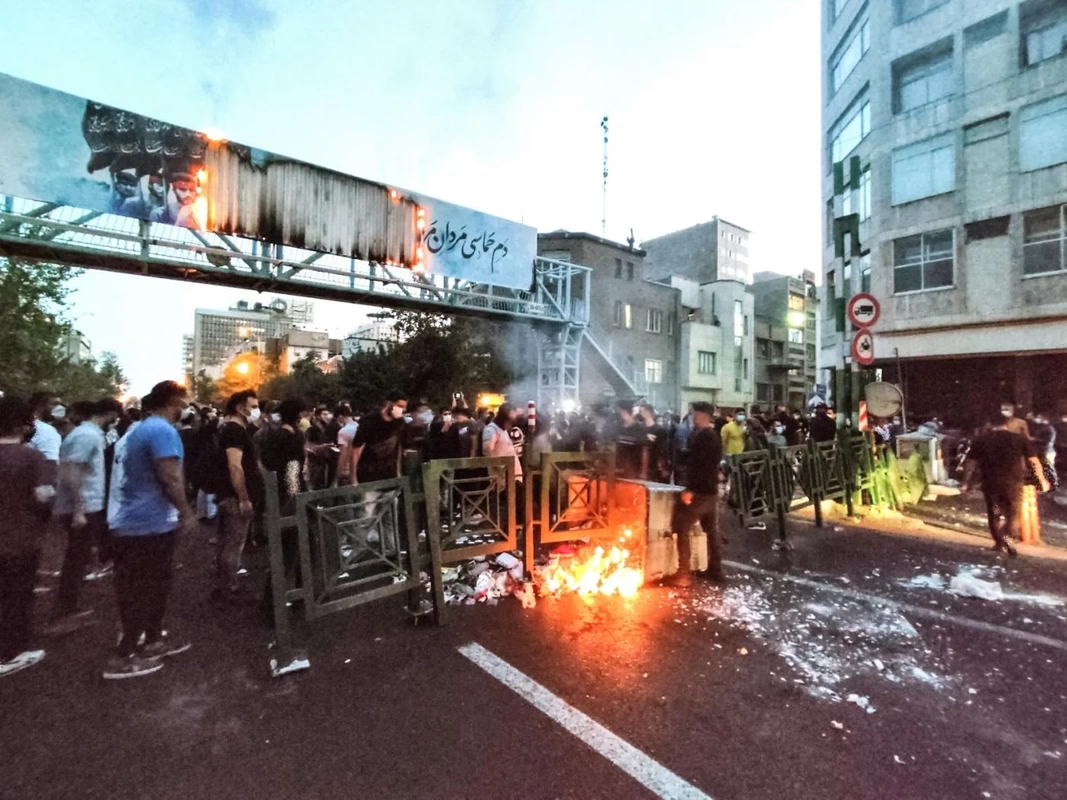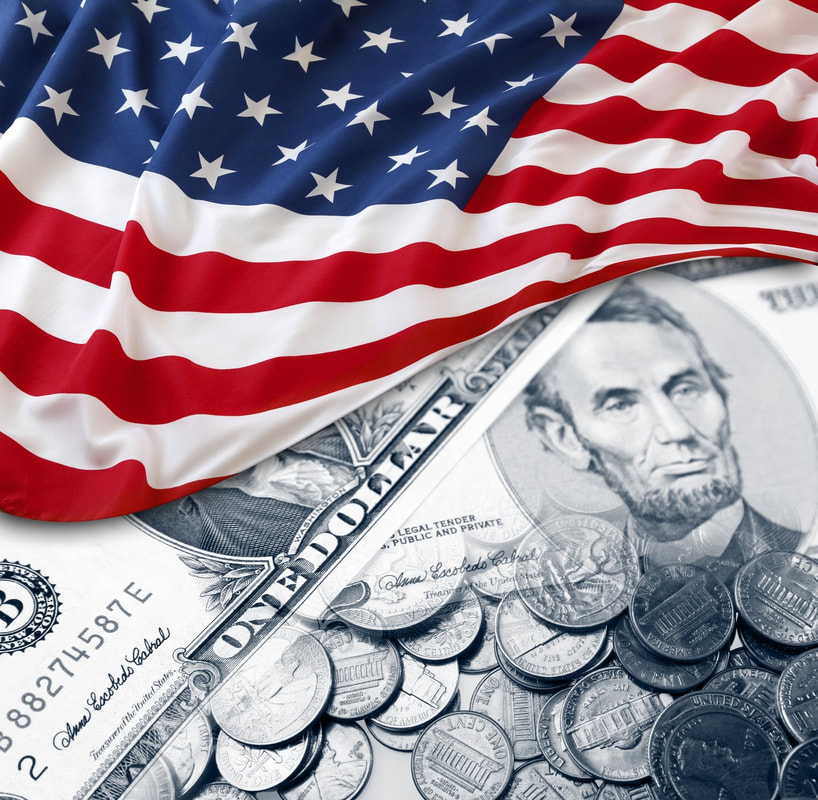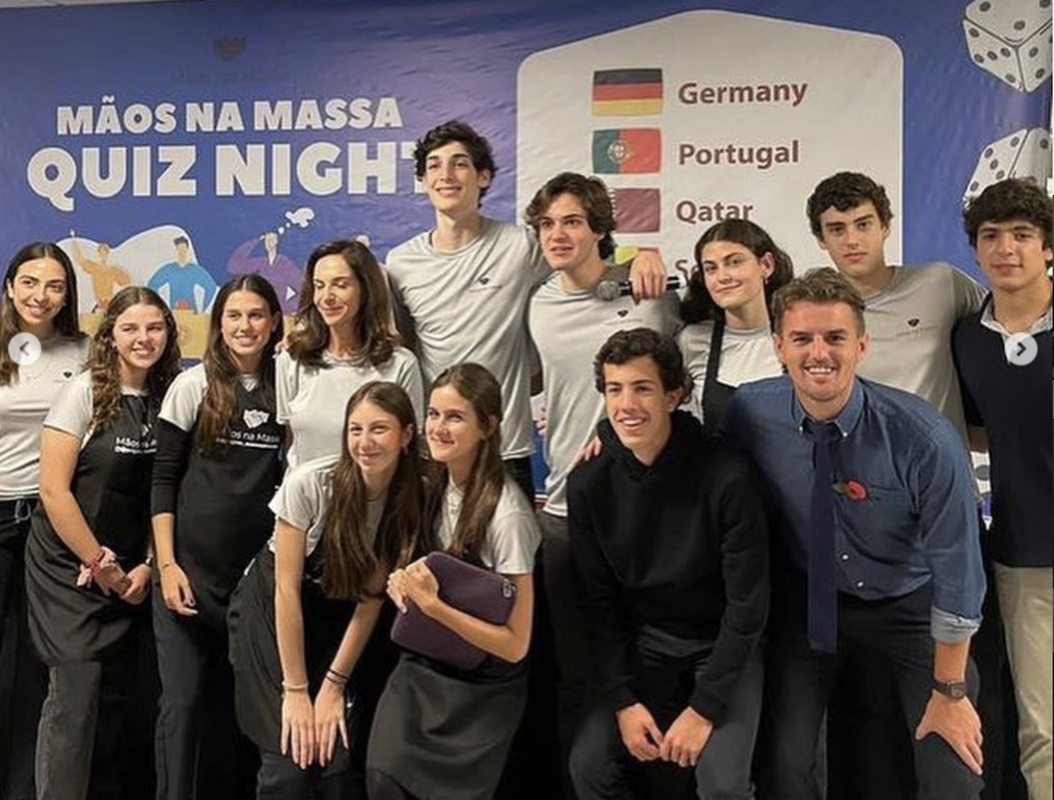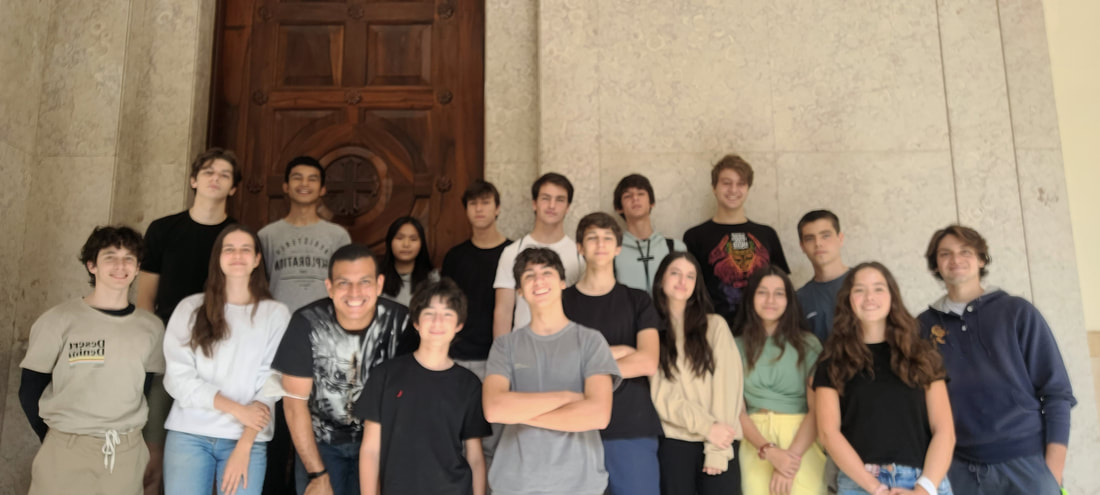|
0 Comments
From an exciting innovation to an ominous threat: tech leaders call for a halt in AI development5/19/2023 By: C. Paixão China's President Xi Jinping's visit to Moscow this week shed light on his growing relationship with his Russian counterpart, Vladimir Putin.
Both leaders have met more than 40 times in recent years, and they now refer to each other as "dear friends." Other international leaders, like Robert Mugabe and Donald Trump, have previously characterized the Chinese President as a wonderful ally, but he does not always return the compliment as he does with Putin. Xi and Putin share a basic foreign policy goal: undermining, if not deconstructing, an international order that they feel is based on Western hypocrisy and denies them proper recognition as strong global powers. This sentiment has grown in Putin's mind since the demise of the Soviet Union, and he has spent years attempting to change the international order. However, China is the only US rival with "the economic, diplomatic, military, and technological power to" remake that order, according to President Joe Biden's national security plan. In 2013, Xi’s first visit abroad as China’s President was to Moscow, where he met with Putin and told him that their personalities were very similar and that they should "always treat each other with an open heart." In 2014, Russia annexed Crimea, creating international turmoil as the United Nations supported Ukraine and imposed sanctions on Russia for the act. In contrast, according to a Chinese foreign ministry official who spoke on behalf of China, the country expressed "complete understanding" of the issues Russia faced and stated that they would support Moscow's "approach to resolving" the Ukraine issue. In 2015, both countries signed a "non-aggression pact" in which they agreed not to launch cyber-attacks against each other and to support each other's decisions by avoiding conflict with each other. In 2019, both leaders met to establish a five-point "comprehensive strategic partnership" based on mutual consensus and strengthened their ties. The Chinese President told the Russian media that "President Putin is the foreign leader that I have interacted with most extensively. He is my best friend, and I greatly treasure our friendship." This further nurtured the relationship between the two countries. In 2022, Xi and Putin met seven times: in February, March, April, May, June, September, and October. Xi repeatedly made it clear throughout 2022 that Russia had China's support on matters regarding sovereignty and security, and both countries repeatedly backed each other up and showed mutual assistance. In February and March of 2023, China has shown support towards Russia during the Russia-Ukraine war, despite having declared themselves as neutral. The West criticized China's 12-point peace proposal, which called for a truce and an end to sanctions, and suggested that China and its enterprises might assist with post-war reconstruction. In March, Xi Jinping welcomed one of Putin's closest allies to Beijing, the Belarusian President, Alexander Lukashenko. Beijing's friendly reception of a head of state with "international pariah status" who had personally aided Putin's invasion, while disregarding requests and appeals from the Ukrainian President, Volodymyr Zelenskiy, has raised speculation about whether China is a neutral peacemaker as claimed. Moreover, on March 20, only days after the International Criminal Court (ICC) issued an arrest warrant for Putin for engaging in acts of war and being a war criminal, Xi visited Putin in Moscow. Putin welcomed Xi as an old friend, and during an informal conversation, Xi Jinping stated that China was ready to stand watch with Russia "over the world order based on international law." After numerous meetings and continuous support between both countries, China and Russia, analysts and other countries have raised doubts regarding China's claimed "neutral status towards the Russia-Ukraine War By: C. Oliveira As technology continues to advance at an unprecedented pace, one area that has seen significant growth and potential is artificial intelligence (AI) chatbots. These virtual assistants, powered by machine learning algorithms, have already made their presence felt in various industries, from customer service to healthcare, and their future looks promising.
One of the key trends that we can expect in the future of AI chatbots is increased personalization. With advancements in natural language processing and machine learning, chatbots will be able to understand and respond to human emotions, gestures, and voice commands more accurately. This will enable chatbots to provide more personalized and relevant responses to users, making interactions more meaningful and engaging. For instance, a healthcare chatbot could analyze a user's health data and provide tailored advice or recommendations based on their specific needs, leading to more effective healthcare management. Another exciting development in the future of AI chatbots is their integration with other technologies, such as augmented reality (AR) and virtual reality (VR). Chatbots could be used to enhance immersive experiences in AR or VR applications, providing users with realistic and interactive interactions within virtual environments. This could revolutionize industries such as gaming, e-commerce, and education, offering new and innovative ways for users to engage with content and services. Furthermore, AI chatbots are also expected to play a significant role in shaping the future of customer service. With advancements in natural language processing and sentiment analysis, chatbots can provide faster and more efficient customer support, reducing the need for human intervention in routine queries. This could lead to cost savings for businesses and quicker response times for customers, enhancing overall customer satisfaction. However, as with any technological advancement, there are concerns about the ethical implications of AI chatbots. Issues such as privacy, data security, and bias in AI algorithms need to be addressed to ensure that AI chatbots are developed and used responsibly. In conclusion, the future of AI chatbots is promising, with advancements in personalization, integration with other technologies, and improved customer service. As the field of AI continues to evolve, we can expect chatbots to play a pivotal role in transforming the way we interact online, offering new and innovative experiences for users across various industries. However, it is crucial to address ethical concerns and ensure responsible development and use of AI chatbots to harness their full potential for the benefit of society. By: L. Pereira The Eastern and Western hemispheres have been at odds since contact was first established, but for the past two centuries the United States has been the East’s biggest foe. This time, however, China has struck an unprecedented blow to US supremacy.
The Chinese government has held several discussions with its allies in relation to establishing the yuan as an alternative to the dollar for trade, with Brazil being one of the newest signatories of the measure. Brazil is one of the world’s foremost agricultural powers (and the leading producer of soybeans, having surpassed the US in 2018) and one of China’s biggest commercial partners. This measure not only weakens the dollar’s position as the world’s main monetary reserve, but also makes it immensely difficult for the US to exert dominance over countries that adopt it. The Americans’ sanctions to Russia have been instrumental in response to the Ukraine war. but with Russia solidifying closer ties to Beijing, the US may find it increasingly difficult to deter its imperialistic territorial advances. What does this measure effectively mean for the United States and for the rest of the world? The US is not taking this lightly. Alerts have been made by several American media outlets that this new chapter between Washington’s and Beijing’s rivalry may be a tipping point for the East. This is perceived as one of the greatest threats to the dollar since the United States consolidation as the world’s leading superpower. However, this does not necessarily dictate the dollar is doomed . It is still the world’s monetary reserve, as has been for nearly a century, and China has not yet surpassed America as the leading economy of the world. The Chinese might even have a demographic ticking time bomb as several experts predict a collapse of their population by the end of the century due to its aging workforce. In summation, this new chapter to the East-West historic rivalry presents legitimate relevance, but does not seem the end of the dollar and US global superpower. By: C. Paixão On the morning of February 17th, 2023, a powerful earthquake struck near the border of Syria and Turkey. The earthquake, which registered a magnitude of 6.4 on the Richter scale, caused significant damage in the surrounding area, including the taking of thousands of lives in both countries.
The epicenter of the earthquake was located approximately 25 kilometers northeast of the Syrian city of Aleppo, and it was felt even as far away as in the Turkish capital, Ankara. The quake struck at a depth of 10 kilometers, which is relatively shallow, thus can lead to more intense shaking on the surface. Syria's casualty count now stands at 5,800 whilst in Turkey, the death toll marks a whopping 40,642. In the immediate aftermath, emergency responders from both countries rushed to the affected areas in search of survivors and to provide medical assistance. Many people were trapped in the rubble of collapsed buildings, hence rescue teams worked tirelessly to free them. The earthquake also caused significant damage to infrastructure in the region. Roads and bridges were damaged or destroyed, and power and communication lines were disrupted. In some areas, water and gas supplies were cut off, leaving residents without access to these essential services. With an estimate of 8.8 residents, the affected region is already grappling with significant challenges, including the worsening of the existing humanitarian crisis in Syria, displacement and economic instability. The governments of Syria and Turkey have both pledged to provide assistance to those affected by the earthquake, but the scale of damage may require additional support from the international community. Natural disasters like earthquakes can strike without warning and cause significant harm to the people and communities in their path. With deadly and dangerous events as this one, it is essential that governments, aid organizations, and individuals are always prepared to respond quickly and effectively. The earthquake in Syria and Turkey is a sobering reminder of this fact and a call of action for those who are responsible of providing assistance to those in need. By: C. Oliveira China has allegedly been flying surveillance balloons over the U.S. There had been a massive surveillance balloon flying over the United States before being shot down off the coast of South Carolina by an F-22 on February 4th, which was said to be flying about 18km high. The balloon took off from China’s Hainan Island before travelling on a path which appeared to go over Guam.
China has maintained that the balloon was simply a civilian airship that drifted astray by accident, however the balloon had collection pod equipment, including high-tech equipment that could collect communications signals and other sensitive information, and solar panels located on the metal truss suspended below the balloon, according to government officials. A statement by a senior State Department officials says the equipment was clearly for surveillance” since it included “multiple antennas” that were “likely capable of collecting and geo-locating communications” After being shot down from 60,000 feet high, the balloon was recovered, and the wreckage was rinsed clean of salt water before having the FBI forensically examine it. According to senior FBI officials, the FBI has the balloon canopy, wires and other electronic components collected from the water surface and have not detected explosive materials on the evidence that has already been examined. In response, China is now making accusations of its own. On Monday, at a press briefing in Beijing, Wang Wenbin, a Chinese foreign ministry spokesperson accused USA of commonly having balloons “enter other countries' airspace." He continued to claim the U.S. was using warships and planes to gather intelligence on China 657 times since the start of last year. John Kirby, a spokesperson for the U.S National security council said in a MSNBC interview on Monday that this claim was not true. After the incident, the US military adjusted radar settings to detect smaller objects and discovered three more unidentified craft that President Joe Biden ordered shot down – one over Alaska, another over Canada and the third over Lake Huron off Michigan. By: L. Pereira Florida is known for its sunny beaches, theme parks and diverse culture. Recently the state has gone through significant political changes and has become a battleground politically, with voters evenly split between Republicans and Democrats. These changes have had a significant impact on the state's government and policies, attracting nationwide attention.
One major political change in Florida has been the shift in demographics, particularly the growth of Hispanic and African American communities. These communities have traditionally been Democratic voters, and their increasing numbers have helped the Democratic Party gain ground in the "Sunshine state". This demographic shift has also led to stricter voting laws, which have been criticized by voting rights advocates for making it harder for minority groups to vote. The state's political changes have had a negative effect on its tourism industry and economy, resulting in a 5% decrease in tourist arrivals and a loss of $1.5 billion dollars in revenue for the tourism sector. The political division has also made it challenging for lawmakers to pass important economic initiatives, such as infrastructure and education funding, leading to a stagnant economy and decreased tourist activity. Since the opinions of the population are largely varying and opposing the legislations have been stalled multiple times. Florida Governor DeSantis is a controversial figure due to his anti-progressive ideologies. Despite the state being home to many liberal artists, it is largely conservative. DeSantis supports low taxes, low crime and believes that progressive policies have led to medical authoritarianism and a disregard for American principles. He has even stated that "the progressive agenda has driven millions of Americans to seek better opportunities elsewhere." Despite his popularity, DeSantis remains a symbol of the divide between Republicans and Democrats in Florida. Despite these challenges, Florida's economy remains robust, and the state continues to attract businesses, entrepreneurs, and tourists. The tech industry has helped to diversify the economy and strengthen its potential. The state's shifting demographics, stricter voting laws, and divided government have all played a role in creating a more diverse and competitive political landscape. As Florida continues to evolve, it will be interesting to see how its political landscape will change and shape its future. Despite the challenges, the state remains a popular destination and has a strong economy, making it a dynamic and evolving place to live, work, and visit. By: A. Melcon This January, myself and numerous other Lower 6 students had the honor of participating in THIMUN, a prestigious MUN conference held annually in the Hague. We departed from Sao Paulo on Friday the 20th of January, and returned on the 28th. Overall, the experience was fascinating as not only did we get the opportunity to participate in an international conference in which we debated eminent topics in front of much larger audience than usual, but also met new friends, got to know a new city, and visited important global centers such as the International Criminal Court.
To start off our trip, we visited Amsterdam on Sunday, our first full day at the Hague. It was only one hour away from our hotel, making the trip easy and accessible. Upon our arrival, Mr. Sousa and Ms. Costa, the two trip organizers, took us to see various impressive sites and eventually left us to have some free time in an area with numerous museums, which we then visited and had lunch at. We later met up and headed to the Anne Frank Museum. The Anne Frank Museum was easily the most interactive and touching museum I have ever visited. Throughout our visit, you not only learnt more of holocaust victims’ stories and the extreme damage that the war caused, but also the personal story of Anne Frank. Having read the book multiple times, it was extremely engaging and rewarding to see the family’s hiding place- even viewing small details such as pencil marks on the walls to mark Anne and Margot’s height- which made the moment even more personal and vulnerable. Being exposed to such a crucial part of history left us all impacted, marking the end of the first day. THIMUN then started early on Monday, located at the World Forum. St Pauls delegates were representing Israel and Monaco, two culturally rich countries we were intrigued by researching. I was placed as Israel in the GA2 committee, where the topics discussed included the persecution of minorities, forced labor, and the reparation of cultural artefacts to their home countries. The first few hours of the conference were slightly nerve racking, as apart from one other St Pauls delegate in my committee, I was surrounded only by about 200 teenage strangers- a far larger audience than I was used to. However, over the course of long lobbying hours and building constructive resolutions together, I slowly got to know more familiar faces, and came out of my first day proud to have been able to overcome any initial shyness and been able to participate in perfecting solutions to complicated problems. Later that evening, many of us went ice skating in a rink in front of our hotel, demonstrating that the trip would not only introduce us to new international friendships, but also strengthen our school ones. On the second day, I came into the conference room more confident than before, already feeling more at ease with a few faces I recognized in the crowd. We finished lobbying by lunch and moved into debate time for the rest of the evening. At the start, the debate was very intimidating and nerve-racking, and I faced more of a struggle to speak up for my delegation. However, by the start of the next day, I had already gotten a lot more confident with contributing to the debate by making insightful POIs. By the time that the last day of the conference arrived, I felt that not only myself, but all other St Pauls delegates, had loved the experience and grown much more comfortable within an initially intimidating setting. At the closing ceremony, despite us all being slightly relieved that the occasionally tiring debate had come to a close, we were very saddened by how our short time at the World Forum, where we had been privileged enough to not only listen to but contribute to debates of eminent relevant topics, was coming to a close. The ceremony was remarkable, showcasing powerful speeches of the secretariat, an incredible band and a flag demonstration by the country ambassadors. Overall, I would fully recommend this experience to other pupils in younger year groups. Meeting people from around the world- ranging from the US, Spain, Germany, Saudi Arabia, Italy, Greece, Egypt and so much more- I cannot begin to explain how much this conference has opened my eyes to the importance of global citizenship and the eminence of shattering discriminatory misconceptions. After hearing distinct opinions on relevant topics, I have been able to become a more global, socially aware citizen more capable of understanding different perspectives and be compassionate within conflicting positions. The last day was one of the most memorable for me, as we had the whole day to experience the visits our teachers had organized for us. We started the visit at the Hague Hotel School, where we visited the facilities, learnt how the university worked, and the many infinite opportunities that studying hospitality can open in the future. We later visited the Peace Palace and ended the evening with a visit to the immaculate International criminal Court. The court was extremely impressive, as we were given a long explanation, and granted answers to our many questions and curiosities, on how such an important intergovernmental organization worked, and the extensive limitations of it. Moreover, the explanation being led by a defense attorney, whose responsibility was to help the defense lawyers the defendant may choose on the proceeding and legislature of the international court, a slightly controversial career which required a great deal of open mindedness. In conclusion, both me and all other St Pauls students who went on this trip loved the experience and wish that many other students who are interested in politics join MUN and eventually get the opportunity to partake not only in such a Worldly and important conference, but also get to visit the important historic hotspots located in the Netherlands. I would also like to express my thanks on behalf of all St Pauls THIMUN delegates to Mr. Sousa and Ms. Costa, who accompanied us throughout the whole trip and the long preparation, as well the University team and other teachers who helped the trip organization behind the scenes. By: M. Gonçalves Last month, on the 10th of November, Projeto Mãos na Massa held a quiz night in order to raise funds directed towards the cause. Lasting from 7pm until 9pm, parents, teachers and students from various year groups gathered in the cafeteria to compete in what would turn out to be a nail-biting ending to a competition challenging the knowledge of its participants. Separated into 9 teams, each representing a country in this year's world cup, participants paid entrance tickets and purchased items such as candles and food baskets, all of which raised money to be used with constructions.
Eagerly answering questions for a variety of topics, among them: history & geography, arts & film, mathematics, science, sports, business & economics, and St. Paul's trivia- the competition was tense throughout. Spain, Portugal and Brazil found themselves tied with 33 points in the end, thus answering one last question to break the tie: "How many people eat at the school cafeteria each day?". The team closer to the correct answer receiving that vital extra point and being crowned champions. Ultimately, Portugal got closer to the correct answer, therefore earning their first-place trophy. At the end of the night, the event delivered what it hoped to; raising a significant amount of money to be invested in the project's cause, as well as a thrilling evening for parents, teachers and students. If interested in donating, access https://www.maosnamassa.org for more information and follow @projeto_maosnamassa on Instagram and TikTok to keep up to date with upcoming events and constructions. |

